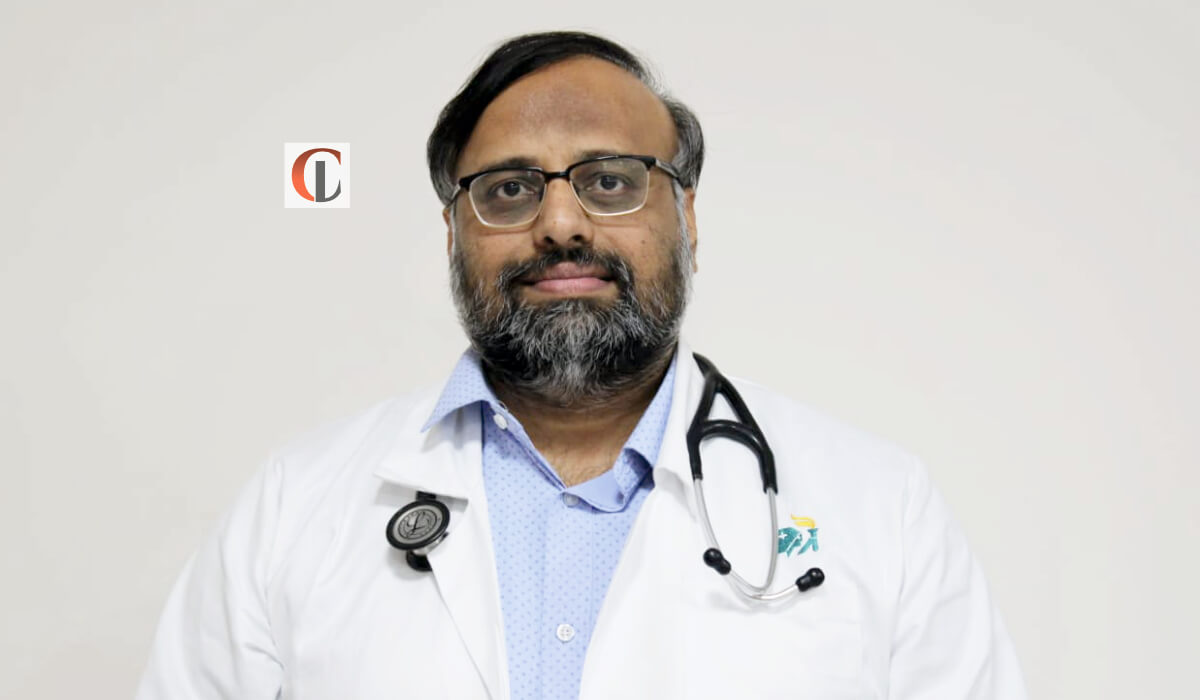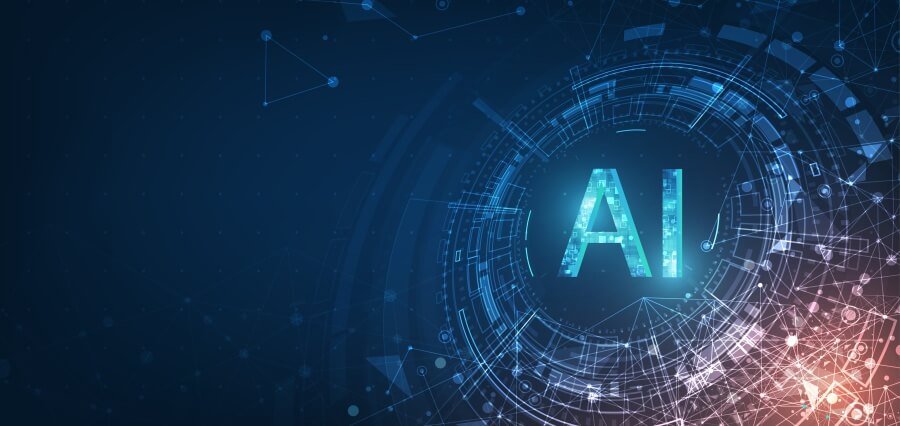Only heart patients and their relatives know how the most compassionate doctors make all the difference between hope and despair, life and death, or pain and relief.
Numerous patients and their relatives speak about their delightfully pleasant experience with Dr Lal Daga. Here are testimonials from a few who remain grateful to one of India’s most renowned cardiologists.
*Nilesh Purohit, “Dr Lal Daga is one of the finest cardiologists who saved my mother’s life, who was in a very critical condition. He is very devoted to his service. I am thankful to him.”
*Shah Virag, “One of the most expert and experienced doctors. Excellent grip on diagnoses.”
*Ajay Kankaria, “Amazing experience. Angiography was done by hand. Just a walk-in, walkout experience for my uncle. No pain. It’s a great experience.”
Azmal Rafik, “Amazing Doctor, of such Good spirit, would recommend to anyone. Dr Daga would not only become a good doctor to you but also a Good Friend.”
Kamanashis Samaddar, “Dr Lal is a great electrophysiologist. He is very cordial and sincere with patients. I was a patient with WPW syndrome. He has done my EPS and RFA successfully. May God bless him.”
Avinash Mehta, “I was there in Aug 2018 for my father’s angioplasty, and Daga Sir had done the whole process. He is an awesome personality, is soft-spoken, and the hospitality was very, very good. He personally took care of each and every requirement of us. Even today, if I message him for any query, he replies immediately.”
Aryan Anarkat, “Dr Lal Daga is the best expert cardiologist who saved my father’s life, who was in very critical condition. He put full effort into saving my father’s life. Anyone can fully trust his diagnosis and treatment. He is devoted to his service. We are thankful to him. He is a very concerned and very good human being too.”
Rakesh Goswami, “We never like someone to play with our heart. But when it comes to Cardiologists, we give them a full hand. That’s exactly the case with me. When my mum was advised for Angiography, I gave Dr Daga my Full hand. And He saved my mum’s life. The CALM n COOLEST Doctor and Human Being I’ve seen. Thank You, Dr Sir.”
A Global Heartcare Specialist provides basic information of common heart disorder and their treatment.
Dr Daga is a Senior Consultant Interventional Cardiologist, and Electrophysiologist, Apollo Hospitals and Dr Lal Heart Centre, Ahmedabad. He has worked as a former consultant and faculty for Invasive Cardiology at Fortis Escorts Heart Institute, New Delhi. He received advanced Interventional Cardiology
Training from Seoul, South Korea, and did his International Observership in VT-VF at Taiwan Veterans Hospital, Taiwan. He is trained in advanced heart failure treatment and CRT implantation at Anhui university.
The Specialties Dr Lal Daga deals with
Coronary Angiography(CAG) and Angioplasty
An angiography or angiogram is a special type of X-ray that allows your coronary arteries to be viewed and recorded on film. This X-ray allows your doctor to see if the blood vessels in your heart are clogged.
CAG is usually performed from the hand (Trans radial) but sometimes it is done from the groin (Trans femoral Angiography).
Before Your Angiography: • Tell your doctor what medicines you take and any allergies you may have. • Don’t eat or drink anything 4-6 hrs before the procedure. • Arrange for an adult family member or friend to drive you home.
During Your Angiography: • A long, thin tube called a catheter is placed inside an artery in your groin or arm and guided into your heart. • A contrast dye is injected through the catheter into your blood vessels or heart chambers. • X-rays are taken to show clear photos of the inside of your heart and coronary arteries.
After Your Angiography: • You must remain under observation for a few hours. • If the insertion site was in your groin, you may be required to lie down with your leg still for several hours. • A nurse will check your blood pressure and the insertion site. • You may be asked to drink fluid to help flush the contrast liquid out of your system. • An adult family member or friend must drive you home from the hospital. • It’ s normal to find a small bruise or lump at the insertion site. These common side effects should disappear within a few weeks.
Angioplasty and Stenting: If coronary vessel have critical blockade then a sheath at radial/ femoral site is inserted and through that a catheter is inserted up to aorta where coronaries are originated from the sinuses.
It’s a minimally invasive technique to widen a narrowed or obstructed artery. A long, wire is inserted through the blockages in the artery and balloon dilatation is done over the wire.
Once the blockages is opened and vessel is widened, a drug eluting stent is implanted at the lesion site to keep it patient. Now it can be done under image guided technology like IVUS & OCT.
Peripheral Interventions: Like the arteries leading to the heart, peripheral arteries that supply blood to the head and neck, kidneys and abdomen, and legs can also become blocked. Dr Daga offers a variety of procedures to reopen these arteries and restore blood flow.
Much like balloon angioplasty is performed to clear blockages leading to the heart, the same technique is used to repair arteries in other body areas. A tiny balloon affixed to the end of a catheter is inflated within the artery to open the narrowed area.
A small, mesh-like tube called a stent is sometimes placed in the artery to keep it open and prevent it from narrowing again. Sometimes, the stents are coated with special medications that slowly release into the bloodstream to help prevent re-closure.
The goal of peripheral vascular intervention is to restore blood flow to your lower extremities, eliminating pain, numbness, or the need for amputation. Dr Daga says, “Our specialists typically employ two different methods – angioplasty and atherectomy.”
Angioplasty and Stents: Angioplasty is a minimally invasive intervention method that uses a balloon-tipped catheter to dilate your artery. Once inserted, the balloon is inflated at the blockage site to compress the plaque against the artery wall, increasing the blood flow. A small tube called a stent is sometimes put in place to prevent the artery from becoming blocked long-term again.
Heartbeat Disorders Management
A heart rhythm disorder called arrhythmia is characterized by a heartbeat that’ s too fast, too slow, or uneven. We are dedicated to providing you with the latest advances in arrhythmia treatment.
Types of Arrhythmia: Arrhythmias are categorized into tachycardia and bradycardia.
Tachycardia is when your heart beats too fast, generally more than 100 beats per minute.
Some forms of tachycardia are easily treated and not serious, but others can be life-threatening. Tachycardia can be a normal response to physical activity but can also be a sign of a medical problem.
Bradycardia: Bradycardia is when your heart beats too slowly, generally less than 60 beats per minute. It becomes serious when your heart beats so slowly that it can’t pump enough blood to meet your body’ s needs.
Symptoms of Arrhythmias: Occasional palpitations during periods of emotional or physical stress are normal and are nothing to worry about. The symptoms of more serious arrhythmias include:
- persistent palpitations that feel like pounding, galloping, or fluttering. • chest pain. • dizziness or fainting. • sweating. • shortness of breath. • light-headedness. • fullness in the throat or neck.
Treatment for Arrhythmias: Treatment for an arrhythmia depends on its cause and how much it affects your health and lifestyle. It is important to remember that not all arrhythmias are dangerous or life-threatening. Sometimes, the heart is perfectly healthy, but its regular rhythm is interrupted by emotional stress or physical activity levels.
Treatment for arrhythmia may include:
- Medication – to stabilize the heart rhythm or treat conditions causing the arrhythmia.
- a pacemaker – a small electronic device that electrically stimulates the heart to maintain an appropriate heart rhythm if the heart rhythm is too slow.
- an implantable cardiac defibrillator – to monitor and correct your heart rhythm if it is dangerous.
- defibrillation – use of a mild electrical current to ‘reset’ your heart rhythm.
- electrical cardioversion – a mild electrical shock that restores a normal heart rhythm while you are under anaesthetic.
- catheter ablation – a catheter with an electrode on end is inserted into your body and directed to your heart, where it gently ‘burns’ and inactivates the area(s) responsible for abnormal signals in the atria it is required in many cases where drugs has limited role.• surgery – to remove or inactivate the heart’s malfunctioning area(s).
- lifestyle changes – including managing stress, quitting smoking, reducing alcohol intake, eating healthy foods, being physically active, managing blood pressure and cholesterol, and maintaining healthy body weight.
Heart Failure Management: If you have been diagnosed with heart failure, your heart muscle isn’t pumping effectively, and blood isn’t circulating properly. When fluids back up into your lungs, it is called congestive heart failure. We can help you manage your condition and improve your quality of life.
Heart Failure Medications: Almost every heart failure treatment plan includes medications. We’ve listed the most common heart failure medications below:
- ACE inhibitors (angiotensin converting enzyme inhibitors), ARBs (angiotensin II receptor antagonists), and
Beta Blockers relieve stress on the heart’ s pumping action. They improve symptoms and reduce hospitalizations for patients with heart failure.
- Diuretics: These medications rid your body of excess fluid.
- Blood Thinners: These medications can reduce the risk of strokes and heart attacks.
- Digitalis: This medication helps decrease heart failure symptoms.
Heart Procedures: Some patients with heart failure benefit from different heart
procedures, including the following:
- Angioplasty, Stent Placement, or Coronary Artery Bypass Surgery: These procedures either open or “bypass” blocked arteries and improve blood flow to your heart muscle.
- Heart Valve Repair or Replacement: Patients with heart failure may have damage to their heart valves. Surgical repair or replacement may be needed to improve the heart’s pumping function.
Managing Other Medical Conditions: An important part of treating heart failure is carefully managing other medical conditions that can worsen your heart failure. These include high blood pressure, high cholesterol, and diabetes. If you take medications to treat these conditions, take them faithfully. Heart Transplant and Ventricular Assist Devices Heart transplantation and ventricular assist devices are therapies for advanced heart failure. Advanced heart failure means you have tried the abovementioned treatments, but your heart failure keeps worsening.
Pacemaker, ICD, and CRT Implantation: Pacemakers and implantable cardioverter defibrillators (ICDs) are small devices that deliver energy to the heart through thin, flexible wires called leads. They are implanted beneath the skin, below the collarbone. “In most cases, we can place the devices with minimally invasive techniques on an outpatient basis (one day or an overnight stay).”
The procedure for inserting a pacemaker or ICD is the same.
Pacemakers: Pacemakers work “on demand” to treat slow heart rhythms. The small electronic devices are connected to one or more wires (leads) that run to the heart’s atrium and/or ventricle via a vein. When the heartbeat is too slow, the pacemaker delivers a small electrical impulse to stimulate the heart to beat.
The pacemaker is implanted during a procedure in which the patient is under local anesthesia. A vein in the upper chest is opened so the pacemaker wires can be advanced into the heart. The wire must touch the heart to carry electrical signals back and forth between the heart and the pacemaker. The wire is then attached to the pacemaker and put in a pouch under the skin.
A pacemaker can also help treat bradycardia, a condition characterized by a slow or irregular heart rhythm, usually fewer than 60 beats per minute.
Implantable Cardioverter Defibrillators (ICDS)
An ICD is an electronic device that stops rapid, life-threatening heart rhythms. If the heart has stopped (cardiac arrest) or is experiencing rapid, abnormal rhythms (life-threatening arrhythmias) that drugs or other approaches cannot control, this device may be used. It may also be used in patients with very weak heart muscles with an increased risk of developing dangerous heart rhythms.
The defibrillator uses two approaches to stop rapid, abnormal heart rhythms. The device can stimulate the heart to beat faster than the abnormal rate, called overdrive pacing, or deliver one or more electrical impulses directly to the heart to stop the rhythm.
The defibrillator is placed in a pocket under the skin of the chest. The device consists of leads and a pulse generator. The leads monitor the heart rhythm and deliver the energy for pacing, cardioversion, and/or defibrillation. The generator contains a battery and a tiny computer that processes information to determine the heart’s rhythm.
Three types of ICDs: single, dual chamber, and biventricular devices.
- In a single-chamber ICD, a lead is attached to the right ventricle.
- In a dual-chamber ICD, leads are attached to the right atrium and ventricle.
- In a biventricular ICD, leads are attached in the right atrium, the right ventricle, and the left ventricle. The biventricular ICD provides cardiac resynchronization therapy for patients with heart failure.
Biventricular Pacemakers or Defibrillators for Cardiac Resynchronization Therapy (CRT)
Dr Daga shares, “In addition to conventional pacemakers and ICDs, we use biventricular pacemakers or ICDs for a treatment known as cardiac resynchronization therapy (CRT).”
CRT devices work by pacing both the left and right ventricles simultaneously, resynchronizing the muscle contractions and improving the efficiency of the weakened heart.
It differs from typical pacemakers, which pace only the right ventricle. He concludes that CRT seeks to coordinate the heart’s contractions and to improve pumping ability and overall heart function. end stage or resistant heart failure patients are treated with lv assist devices or heart transplantation.
Anyone developing new onset chest discomfort, breathlessness, early fatigue, palpitation or giddiness should see a cardiologist as earliest possible. It can be an early stage or onset of cardiac disorder. C-disorder. Post COVID also seems to be a rise in cases.
Disclaimer: This information is just to make aware about cardiac disorders and their management. Kindly approach a doctor for patient tailored therapy.








